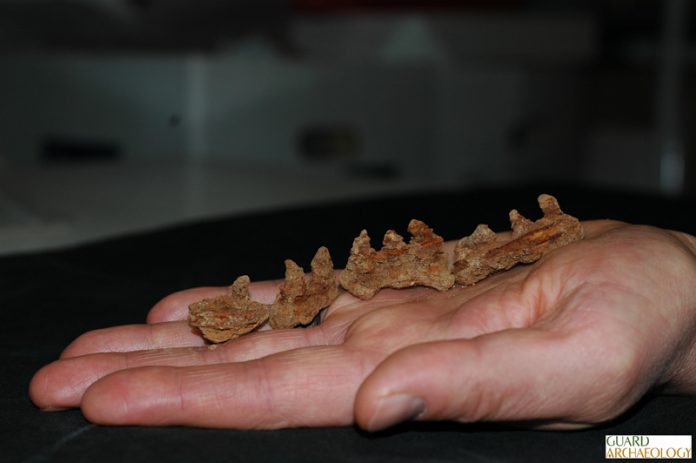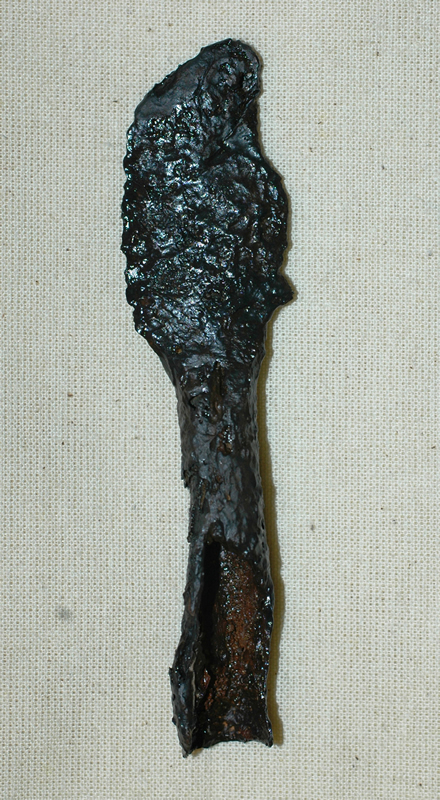The discoveries were made during a combination of Scottish Water and Scottish Power improvements to domestic services within the area of Carzield Roman Fort. As this is a Scheduled Monument, GUARD Archaeologist Warren Bailie was required to monitor the excavations, and he led subsequent investigations when archaeological remains were encountered.
This was no easy task as the new service trenches were only 30-40 cm wide and required near impossible contortions to record the lowest deposits! But despite such a narrow area being opened up, the GUARD Archaeology team managed to recover an array of artefacts that form a sample of all the ingredients for the Roman occupation of southern Scotland over 1850 years ago.
One of the most striking artefacts was an iron javelin head with part of its wooden shaft still evident, which while badly corroded and broken (perhaps due to having seen action?) is nonetheless hard evidence for the military character of the Roman occupation.
Another interesting artefact was the remains of a Roman boot. While he leather had long since rotted away, the hobnail sole of the shoe was intact, and specialist analysis by the National Museums of Scotland indicated that the boot had up to five layers of leather sole to cushion its owner’s foot, a not uncommon feature of Roman boots. Just like a modern soldier, boots were essential equipment not just for comfort but to enable the Roman auxiliary soldiers garrisoned at Carzield to go out on patrol amongst the native tribes of Dumfries and Galloway. The ability of Roman armies to march long distances was a potent ingredient of the success of the Roman Empire’s expansion and this is clearly corroborated at Carzield.
Also like a modern army, logistical support was as important to the Roman army occupying southern Scotland, and this is demonstrated by a number of artefacts that show the long supply chain that enabled Roman troops to garrison what was in the second century AD the northernmost reaches of the Roman Empire.
Evidence of wheat was also recovered from Carzield, which indicates that food supplies for the Roman garrison were not being requisitioned from the local populace (as very little wheat was grown locally at this time), but was supplied again from the Roman provinces to the south. In fact one of the Roman Forts a few miles to the east of Carzield, at Birrens near Middlebie, was called Blatobulgium by the Romans, meaning the ‘flour sack’, and held three granaries which indicate it was probably used as a supply depot for other Roman forts in the region.
This new assemblage of artefacts provides additional evidence to that recovered in 1939, during an earlier excavation, which first revealed that Carzield Roman Fort was built during the Roman campaign of c. AD 139-143, when the Antonine Wall was built to bring southern Scotland into the Roman Empire.
This work was funded by Scottish Water and Scottish Power Energy Networks. Historic Scotland and the Dumfries and Galloway Council Archaeologist provided advice during the course of this project. GUARD Archaeology especially thanks local resident and secretary of the Dumfriesshire and Galloway Natural History and Antiquarian Society, John Williams, who was on site each day and provided documentation held by the society to aid in the interpretation of the archaeology found.
Go here to read more and click on the image to see a gallery of artefacts and site photos: http://www.guard-archaeology.co.uk/news14/CarzieldNews.html



